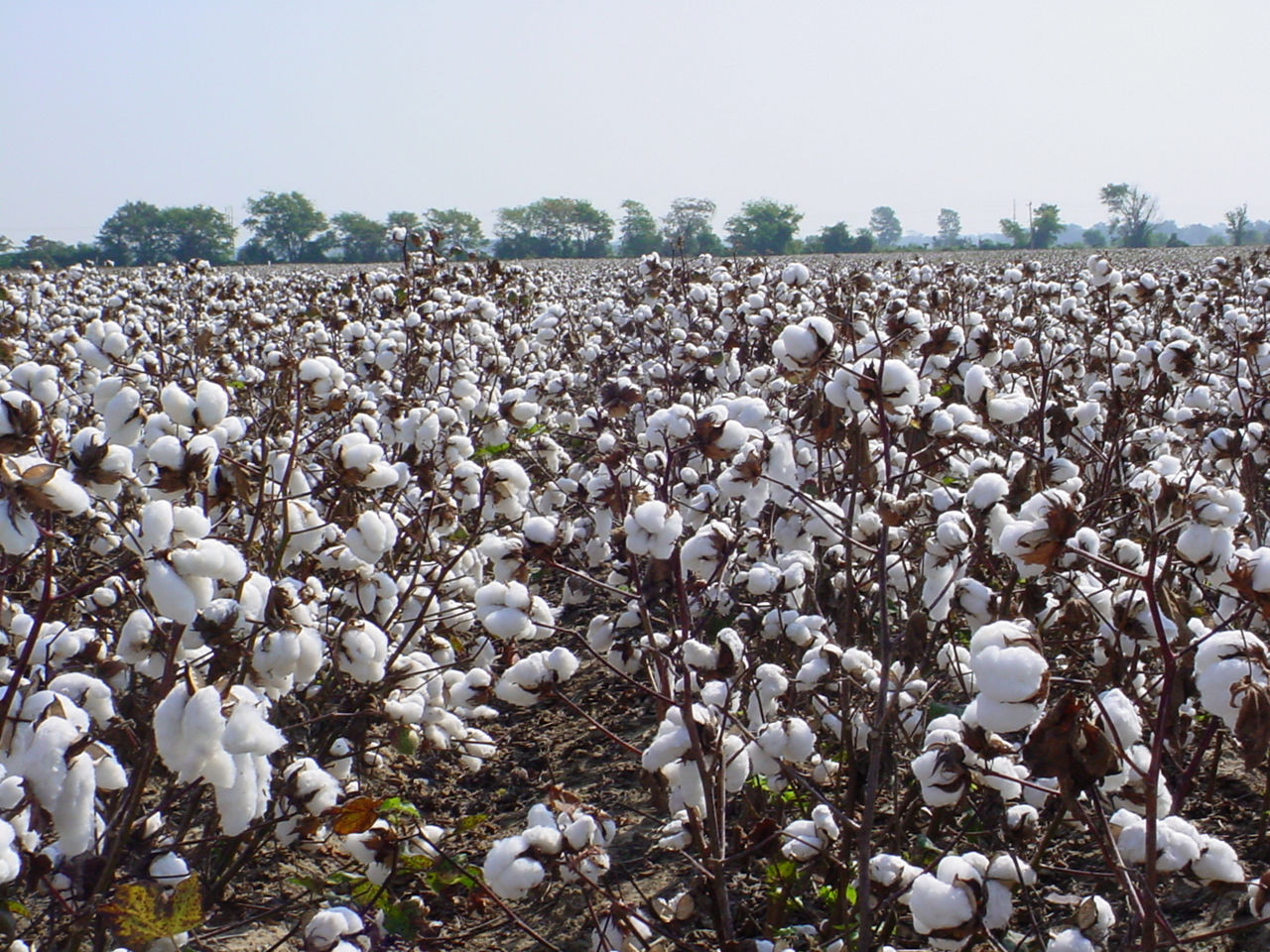5 MIN READ
Causes of High Micronaire in Cotton
July 1, 2024
- High micronaire cotton is a marketing concern for cotton producers.
- An excess of carbohydrates causes cotton fiber cell walls to thicken, which increases micronaire.
- High micronaire is generally associated with anomalies such as drought stress, water stress, or extremely high yields.
Micronaire is just one of several measurements for which harvested cotton is graded. Other measurements include fiber length, length uniformity, fiber strength, color grade, trash, and leaf grade. Each measurement has specific ratings for quality.

Micronaire Defined
Micronaire is a measurement of the cell wall thickness of cotton fibers and their air permeability. The measurement indicates the fibers’ fineness (linear density) and maturity (degree of cell-wall development) and is reported to the nearest tenth.1 When cotton plants begin to bloom, cells that eventually form fibers elongate into the boll. Fiber length is finalized about 16 to 20 days after formation and fibers thicken from the inside out. Think of plaque building up inside of an artery, which adds thickness to the artery wall. Carbohydrates produced through photosynthesis allow cellulose to be added to the cotton fiber walls, increasing the walls’ thickness and strength.2
How Micronaire is Measured
A common method for measuring micronaire consists of placing cotton lint in an enclosed chamber, compressing the lint to a set volume, and subjecting it to a set pressure. The result is a function of fiber maturity and fineness.
Cotton buyers and textile manufacturers prefer a micronaire range of 3.8 to 4.5 and a fiber length of 1 1/8 inch or longer. Thicker or thinner fibers can cause problems in spinning and uniformly dying yarn. To hold yarn together and provide acceptable strength, a minimum of 100 fibers per cross section of yard are required. If the 100 fibers are coarse and rated as high micronaire, the fibers can only produce a coarse, thick yarn.3 Buyers discount the value of high and low micronaire cotton.
Causes of High Micronaire
Carbohydrates produced through photosynthesis are necessary for plant development. However, if carbohydrate production exceeds plant requirements, the excess can thicken the cell walls of cotton fibers because the carbohydrates need to be stored somewhere in the plant. Carbohydrate production continues when cotton is subjected to poor environmental factors such as drought or water stress. If early season growing conditions are dry and hot, upper bolls may shed, leaving only the bottom bolls. With fewer bolls to share in the produced carbohydrates, each existing boll receives additional carbohydrates and increases the micronaire.
First-position bolls tend to have high micronaire because more leaves are available to support them and the leaves are less likely to be shaded. Because of this, early crops with high first-position boll retention tend to have higher micronaire than crops with fewer first-position bolls.3 Variety selection can also influence micronaire. Some cotton varieties have a higher tendency to produce shorter fibers and are characteristically higher in micronaire.
Management Considerations
Factors that help maintain uniform mid- to late-season fruit retention to keep carbohydrates distributed among more bolls, and factors that provide for crop earliness, can help reduce high micronaire values. Independently and interactively, agronomic and environmental factors such as planting date, fertility, pest control (weeds, insects, diseases), rainfall, irrigation, plant growth regulators, variety, and desiccation can influence micronaire.4
Ultimately, timely defoliation and harvesting are important in any management strategy. The blend of less mature fibers in the upper bolls with more mature fibers from lower bolls help reduce the average micronaire for the crop. The characteristics for cotton varieties should be reviewed as some varieties are inherently higher in micronaire. If high micronaire is anticipated, consider defoliating at 50% open boll compared to 60 to 70% open boll.2
Cotton farmers should review multi-year data and evaluate trends in yields and fiber quality across many different locations when selecting cotton varieties. Selection of a cotton variety with an average micronaire rating on the high end of the discount range may increase the likelihood of discounts if growing conditions become favorable.
Deltapine® brand varietal profile sheets have a micronaire rating. The sheets are available at https://www.cropscience.bayer.us/brands/deltapine/varieties. Local Deltapine® brand seed providers can help with selection and placement.
Sources
1Montalvo, Jr., J.G. 2005. Relationships between micronaire, fineness, and maturity. Part I. Fundamentals. The Journal of Cotton Science. 9:81–88. https://www.cotton.org/journal/2005-09/2/upload/jcs09-081.pdf
2Dodds, D. Cotton micronaire – Potential problems exist this year, plan accordingly. Mississippi Extension. EYTest®. https://eytest.com/tech.asp?id=11
3Hake, K., Bragg, K., Mauney, J., and Metzer, B. 1990. Causes of high and low micronaire. National Cotton Council, Physiology Today. 1(12). https://www.cotton.org/tech/physiology/cpt/fiberquality/upload/CPT-Sep90-REPOP.pdf
4Silvertooth, J.C. 2001 (reviewed 2015). Crop management for optimum fiber quality and yield. az1219. The University of Arizona Cooperative Extension. https://cales.arizona.edu/crop/cotton/cropmgt/fiber_quality.html
Web sources verified 6/24/24. 1414_95932